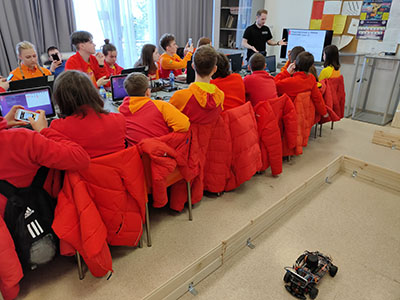Video surveillance and security
Depending on the specific tasks of video monitoring in a present-day infrastructure, our experts use various innovative software and hardware solutions that improve the basic functions of video surveillance systems and provide for the performance of hyper-focused tasks of the system owner.
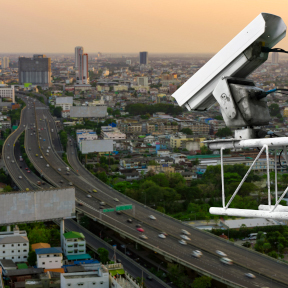
Search and identification
of objects
Using machine learning algorithms, the system detects, analyzes and classifies images in a video stream; that is, it automatically performs the work of a human operator in a continuous mode and with a multiple increase in efficiency. Object recognition
The system recognizes objects and classifies them, and automatically takes decisions about further actions based on the conclusions made (for example, determines the speed of a vehicle as unacceptable and decides to form an evidence base for the offense).Image enhancement
Using the algorithms of video signal pre-processing along with algorithms of image post-processing, the system improves recognition of object details and the quality of evidence.System analysis
Specialized software analyzes and compares video data from different cameras, which gives a more complete picture of the nature and circumstances of the incident and greatly improves the accuracy of the system functioning.
Additional functions
- Photo and video recording of events and objects.
- Synchronous measurement and fixation of the time of photographing.
- Synchronous measurement and fixation of the speed of movement of various objects and their location in the control zone.
- Formation of evidential base on incidents.
- Remote monitoring option.
Smart сity
The Smart City concept involves the use of the latest digital technologies in the life of megacities; the most important city structures and processes, e.g., the transport system, housing and communal services, the service sector and others, operate with the help of those combined into one information system to save resources and improve living conditions of citizens.
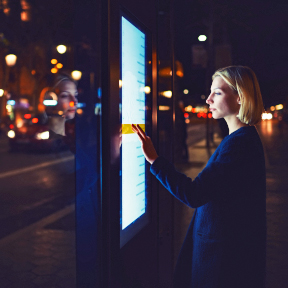
Video analytics
A huge array of data coming from an ever-increasing number of CCTV cameras is processed using video analytics systems. They independently analyze video materials, classify objects, track their movements, detect violations, and form statistical information as the basis for decision-making.
Laser scanning
The software for processing laser scanning data resolves the issues in urban space analytics, modeling and designing due to the high accuracy of measurements and the ability to quickly obtain specialized data.
Technical vision
It is used in transport management systems, including unmanned ones, and gives traffic participants a greater degree of safety and awareness of the road situation compared to traditional methods.Industrial Internet of Things (IIoT)
Wireless technologies for transmitting information through remote data collection devices provide for the ability to remotely monitor and control distributed systems, as well as integrate data from several complexes.
Big data processing software
Wireless technologies for transmitting information through remote data collection devices provide for the ability to remotely monitor and control distributed systems, as well as integrate data from several complexes.
Design and construction
Our area of competence is information modeling and computer-aided design, applicable at all stages of the life cycle of an object: during project creation, construction, operation, reconstruction and modernization.
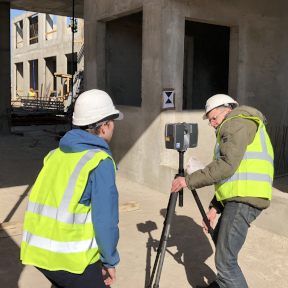
Laser scanning
Processing and analysis of laser scanning data and photogrammetry to study the local topography during design, measuring work, monitoring the compliance of the building under construction with the standards of technical documentation, monitoring the condition of the object during operation.
Building information modeling
Monitoring and control of the state of distributed engineering systems and communications, optimization of their functioning and technical support is performed using multisensory systems with the use of distributed computing methods and the industrial Internet of things.Industrial automation
Laboratory specialists develop high-precision industrial sensor systems for the analysis of automated systems at the production. Based on the processing of heterogeneous data, a technological audit of the system is carried out and problem areas in its operation are determined. Analogous solutions are applicable in almost any industry.
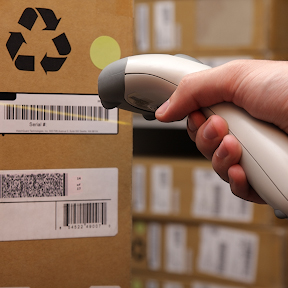
Data collection
Depending on the specifics of an enterprise, video sensors, gyro sensors, barometers, sound, temperature, and pressure gages, etc. are used in the composition of sensors to obtain primary information about the system in the static and dynamic states.
Data transfer
Raw data are transferred to the cloud computing service over wireless networks for interpretation and analysis.
Distributed computing
In the case of developing auditing systems for distributed complexes, i.e., objects of engineering infrastructure or pipelines, we prefer to use edge computing and fog computing technologies, performing the calculations on input devices or on servers located near them.
Instant analytics
The receipt of information from all components of the system occurs simultaneously. Thanks to the speed of calculations, the operating personnel gets an instant slice of information on the system without delays in the real-time mode.
Predictive analytics
Based on historical data on the system functioning, the software created on the basis of algorithms and models of predictive analytics predicts anomalies in the operation of the equipment and provides recommendations for their prevention.
Medical information systems
Laboratory competencies are productively applied in creating high-tech hardware and software solutions for collecting and processing medical data. They are intended to support decision-making in diagnosing diseases, the preparation and conduct of medical procedures, and data analysis for research, etc.
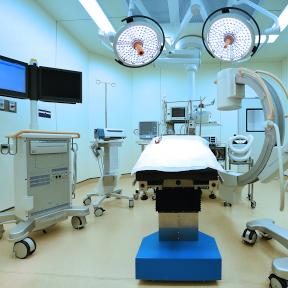
Optical navigation
The optical navigation module with high accuracy calculates the three-dimensional coordinates of the surgical instrument in the area of the surgical field, which allows the system to be used as an auxiliary tool for minimally invasive surgeries, including those on the brain.Visualization
Intra-operative imaging with the use of the results of CT and MRI provides information on the anatomical features of the patient, location of the instruments, the state of the pathology and the location of the surgical intervention at the planning stage and during surgery in the real-time mode.Failure reliability
The possibility to reload particular modules in the event of an exception or failure, as well as to monitor the state of the application process, including restarting the application in case of failure with loading of the last state is provided.Cost optimization for healthcare
The hardware is designed from standard components, which can significantly reduce the cost of a turnkey solution compared to world analogues without compromising technical specifications. Scalable to support new types of operations and equipment is provided.Engineering education
The Laboratory is engaged in the advancement of projects pertaining to the training of personnel in emerging digital technologies. This endeavor encompasses not only theoretical instruction but also the implementation of interactive educational modules exemplifying the practical applications of Industry 4.0 technologies. Topics include AI technologies, computer vision, robotics systems, and data acquisition, processing, and analytics systems as integrated technological solutions.
